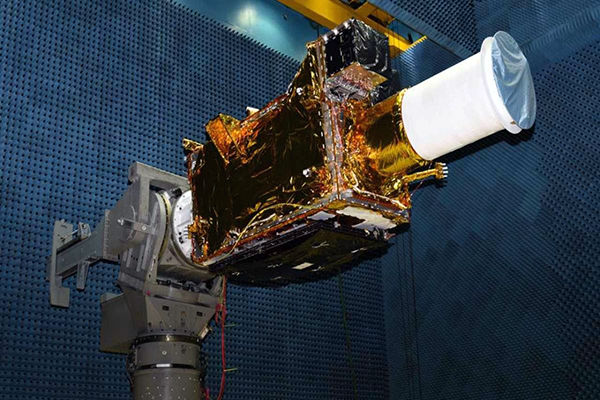As part of its modernisation and network-centric warfare and communications programme, the Indian Navy is looking to acquire a dedicated earth imaging satellite — Geo Imaging Satellite-2 (GISAT-2) — during 2021-22. Once operational, the satellite is expected to enhance the navy’s operational capabilities in the Indian Ocean Region (IOR), which is strategically and geopolitically important, especially in the backdrop of increasing Chinese presence.
The GISAT-2, is among 21 planned procurements, including some long-term acquisitions as per information from the ministry of defence (MoD). And, the capability development/modernisation of the navy is being undertaken in accordance with the long-term plans being put in place for the next decade.
While the MoD has listed GISAT-2 for procurement this fiscal, the timeline for development of the satellite and launch have not been firmed up yet. Among the armed forces, the Navy has been ahead when it comes to acquiring satellites.
GISAT Family of Satellites
Geo Imaging Satellite (GISAT) is an Indian imaging satellite class for geostationary orbit with a high temporal resolution, meant for providing near real time imaging with fast revisit capability and real time monitoring. Two satellites will provide resolution in the range of 42 to 318 m. It will carry multi-spectral (Visible and Near-InfraRed, and Short Wave-InfraRed), multi-resolution (42 to 318 m) imaging instruments. The first satellite was launched on 12 August 2021 but failed to reach orbit as cryogenic upper stage of GSLV could not ignite. The second satellite, (GISAT-2) will be acquired by Indian Navy and will differ slightly in capabilities compared to GISAT-1.
GSAT-2 capabilities
The satellite’s final geostationary transfer orbit is of around 36,000 km. All Indian earth observation satellites have been placed somewhere around 600 km orbits so far and circle the earth pole to pole. The orbital slot where GISAT-1 will operate is 93.5° East this means that it will be collocated with INSAT 3A, INSAT 4B and GSAT 15.
Known instruments to be carried on GSAT-2 are:
• Multi-spectral Visible Near Infrared (MX-VNIR)
• Hyperspectral Imager – Visible Near Infrared (HyS-VNIR)
• Hyperspectral Imager – Short Wave Infrared (HyS-SWIR)
• Multispectral – Long Wave Infrared (MX-LWIR)
The geo imaging satellite will help keep a check on natural hazards and disasters, keep a constant watch on the border areas, and monitor any geographical changes.
It will be able to carry out rapid surveillance. It will rotate the earth and return the same spot every two hours and when needed, it can spend a longer time on certain areas.
GISAT has a lifespan of 7 years. The earth observation satellite weighs 2,100 kg. It is powered by a deployable solar array and batteries. GISAT is built on a modified I-1K (I-1000) Bus.
The GISAT-2 will be designed to provide near real-time images of large areas of region of interest at frequent intervals, which will help the navy not only in surveillance but also operations planning. Operating from a geostationary orbit (GEO), the satellite will facilitate near real-time observations under cloud-free conditions too.
A 2+tonne class satellite, GISAT-2, like GISAT-1 will be configured around the modified I-2k satellite bus. The payload specifications of GISAT-2 will differ from that of GISAT-1 and that ISRO is working on various payloads. The first one (GISAT-1) was for civilian use, but GISAT-2 is for strategic purposes and the Navy has very specific requirements which they (ISRO) need to meet. ISRO will be launching the satellite on the GSLV-Mk2 after obtaining financial clearances for the same.
Military Satellites
Currently, India has only two dedicated military satellites. The GSAT (Geosynchronous Satellite) satellites are India’s indigenously developed communications satellites. GSAT 7, launched in Aug 2013, enables the Indian Navy to acquire blue water capabilities and not depend on foreign satellites like Inmarsat, which provide communication services to its ships. GSAT-7A, launched in Dec 2018, is an advanced military communications satellite meant exclusively for the Indian Air Force.
On March 22, 2022, the Defence Acquisition Council (DAC) accorded acceptance of necessity (AoN) for GSAT-7B satellite for the Indian Army (IA). The GSAT-7B satellite would help the Indian Army enhance its surveillance in border areas.
In November 2021, the DAC had accorded AoN for a 2,236-crore proposal by the Indian Air Force (IAF) to buy GSAT-7C satellite and ground hubs for improved real-time communication.


















